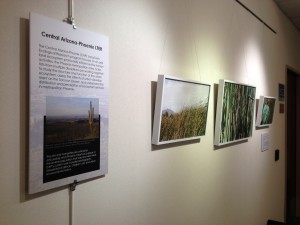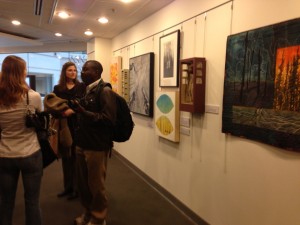Postdoctoral Research Associate, Arizona State University
Deadline for Application: The position is open until filled; but materials should arrive by August 31, 2012 for full consideration.
We are seeking an outstanding postdoctoral research associate for a two-year position on NOAA-funded research evaluating drought risks and its impact on agricultural land and water use to support adaptive decision-making. The overall goals of this study are to undertake research to better understand how water use by crop type responds to drought conditions and to use this knowledge to support adaptive management in the agricultural sector and foster sustainable water use in an era of climate uncertainty and change. This project seeks to answer the underlying research questions: a) How does vulnerability to drought vary by crop types based on a large spatial scale analysis?; b) What is the impact of drought on agricultural water consumption at different spatial scales?; c) What adaptive options are available through changes in crop mixes and limited time market driven water transfers? and d) What are the economic cost-benefits of alternative adaptation strategies under different drought scenarios at the farm and watershed levels? To address the above research questions, the following objectives have been set: (1) Identify different agricultural crop types in two wet years (i.e., 2001, 2005) and two drought years (i.e., 2000, 2002) over the selected study area using advanced image processing techniques (e.g., spectral matching techniques, regression tree algorithms, space-time spiral curves - change vector analysis, Phenology analysis approach, image fusion with time series spectral indices, multiple endmember spectral mixture analysis) and remotely sensed data (e.g., MODIS, Landsat, ASTER, Hyperspectral); (2) Determine evapotranspiration (ET) or water demand by crop type for the selected years using satellite-based SEBAL/MATIRC; (3) Generate water demand per crop per pixel and integrate with selected drought indicators; (4) Examine statistical relations between water demand by individual crop types as well as agriculture land as a whole and drought index using spatial regression and analysis of variance tests; and (5) Estimate the economic impacts of drought at both farm and the watershed level and assess economic cost-benefits of alternative adaptation strategies under different drought scenarios using crop budget analysis.
More information on the project can be found here: http://geoplan.asu.edu/myint-noaagrant2012
A successful candidate should have a PhD in geography, agriculture, environmental science, ecology or a related field with a strong emphasis on remote sensing of agriculture mapping, geospatial analysis, multivariate statistics, and spatial modeling. Experience in the use of remote sensing and GIS software, such as ENVI, Imagine, eCognition/Definiens, IDRISI, ArcGIS, and Matlab is required. A substantive focus in urban agriculture ecosystems (e.g., water; evaporatranspiration; ecosystem services; plant ecology, drought) is also necessary. Demonstrated computer programming experience (e.g., ENVI/IDL, MATLAB, Python) is a plus. The applicant should have a good publication record and a demonstrated ability to work independently. This is a grant-funded position wherein employment is contingent upon the renewal of the grant.
Applicants should submit a CV, a brief statement detailing how their research interests align with the focus of the project, and the names and contact information for three references. Estimated start date is October 1, or as soon as the candidate is available. Please submit applications to: Soe W Myint (soe.myint@asu.edu).



